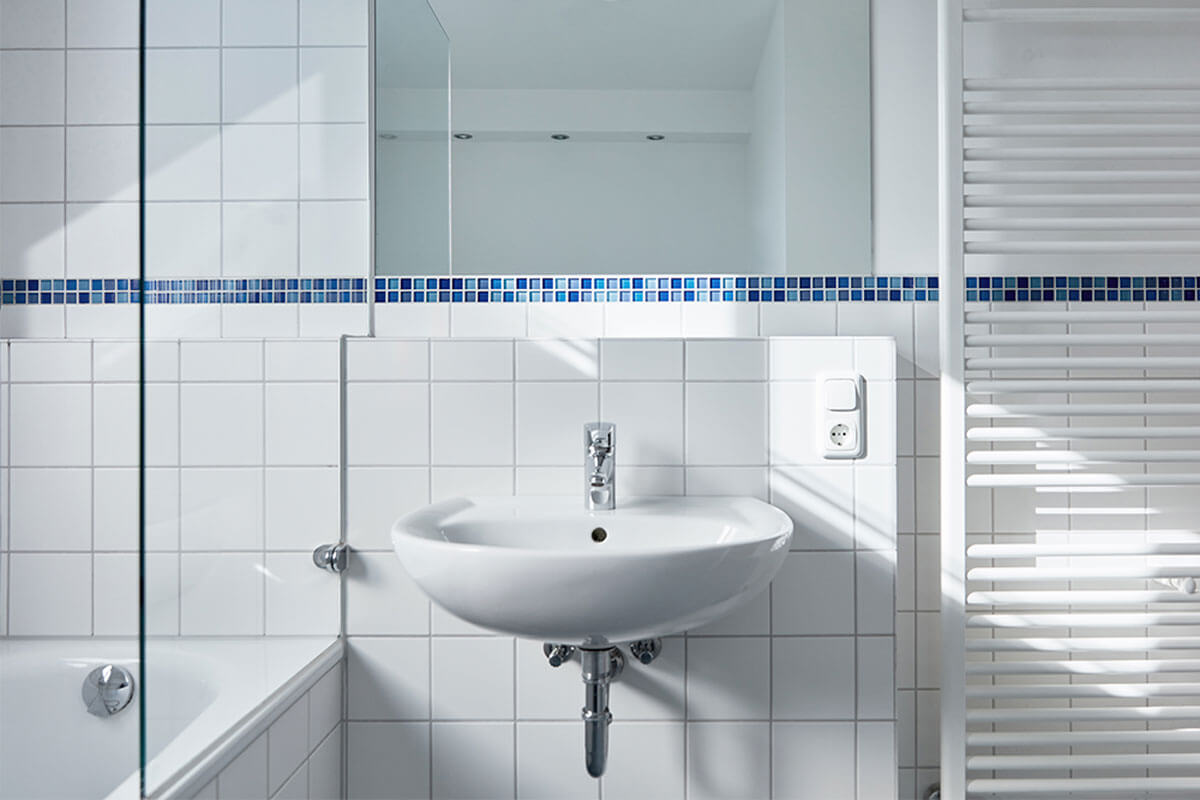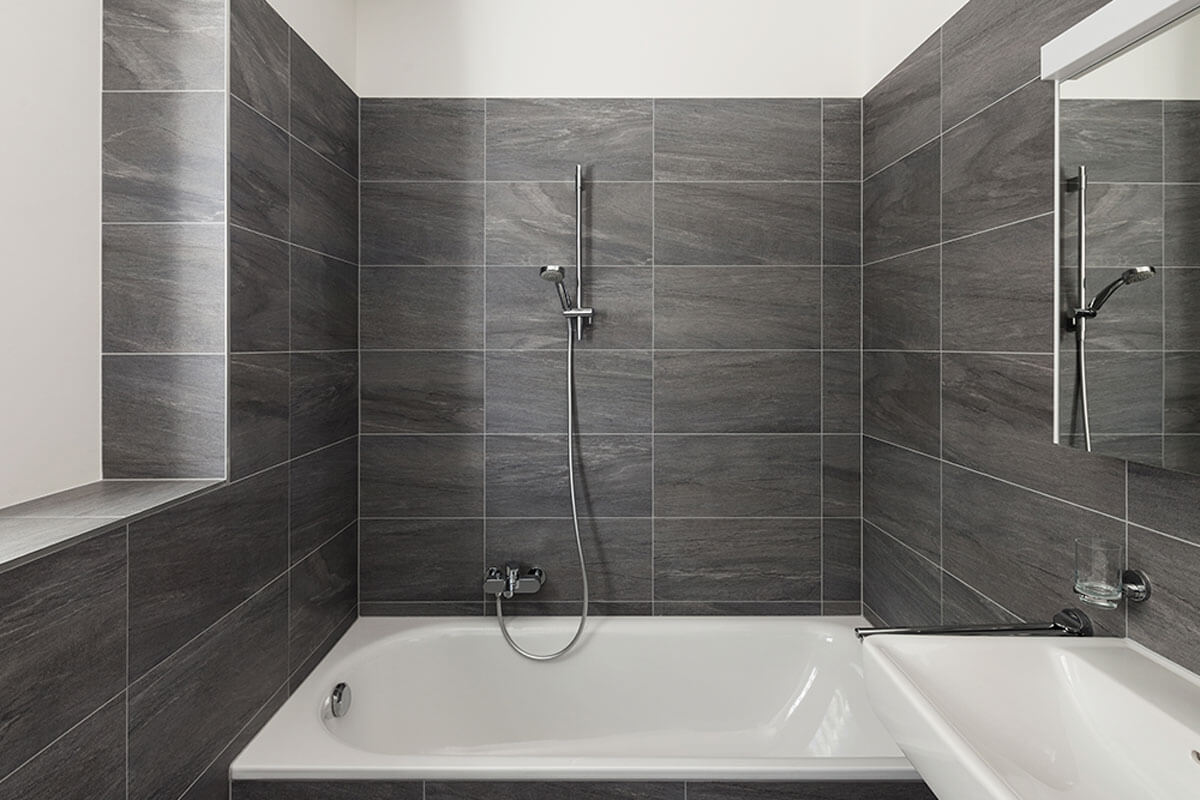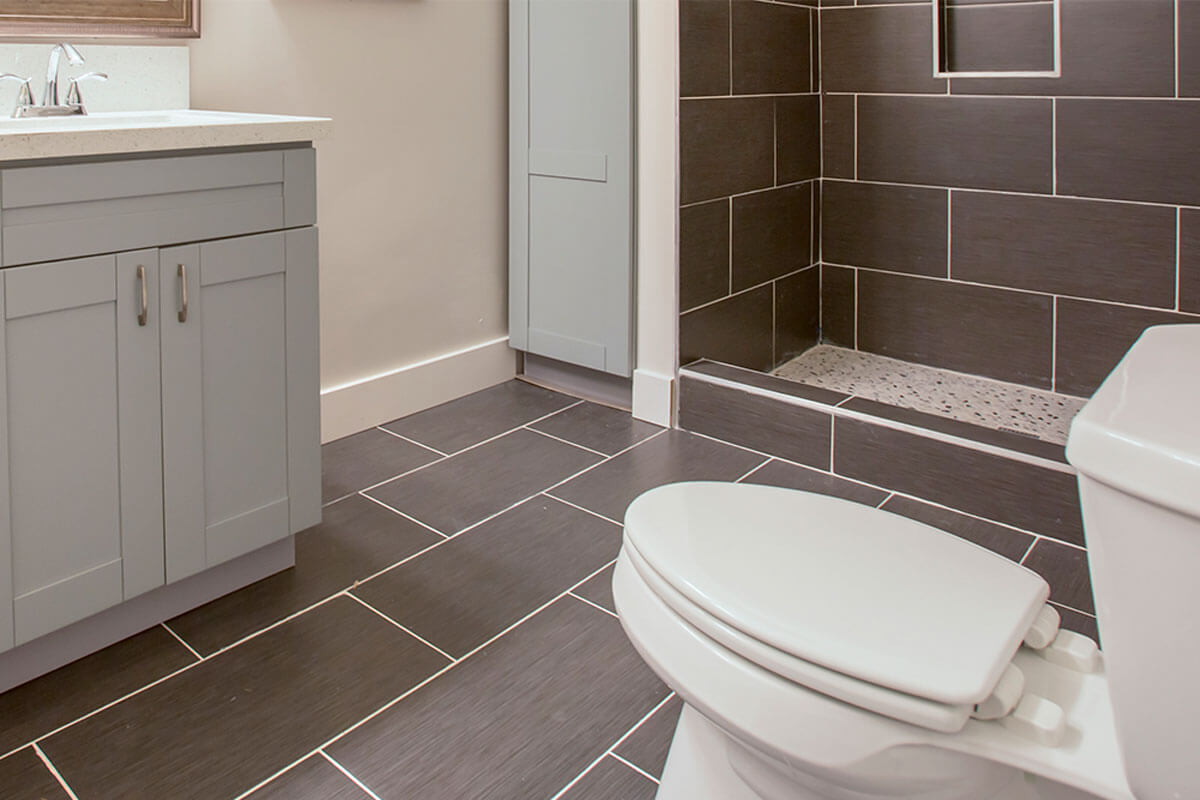Cleaning Bathroom Tiles Has Never Been Easier! Tricks and Remedies

Cleaning the types of stains that appear on bathroom tiles makes it easier to maintain the beauty they can offer. In addition, by keeping this space in the home in good condition, you’ll eliminate the bacteria that tend to accumulate there.
In the same way, by regularly cleaning your bathroom tiles you’re removing dirt and limescale or soap residues that begin to accumulate over time. However, if you’ve already tried cleaning them with soap and water, as a traditional method, you’ll know that it’s not that easy. That’s why we have some tricks and remedies that’ll surprise you and leave your tiles gleaming.
The best thing about our tricks and remedies is that you won’t have to buy expensive specialized cleaners since it’s likely you’ll already have these products in your home.
What are the most common stains on bathroom tiles?

The bathroom environment is always humid, this makes bacteria grow easily, so it’s recommendable to clean it regularly. We can see with the naked eye how, if bacteria isn’t removed promptly, it’ll stain your tiles and grouting.
Beyond this type of stain, we also find:
- Limescale: in areas where the water is very calcified, white spots tend to appear, that over time, become more complex to remove. These tend to appear in the shower and sink areas.
- Soap: it’s very common to find pink, black, or white stains on the edges of the shower over and between the tiles. They originate from soap, shampoo and conditioner residues that harden when dry.
- Fungi and mold: often found on the tiles in the lower part of the shower, where the water tends to linger the longest. This is produced and caused by humidity.
- Rust: moisture also causes any metal objects in the bathroom to spoil. This begins to leave orange stains, typical of rust, on the tiles.
Tricks and remedies for cleaning bathroom tiles

Well, without further ado, we’re going to tell you about the tricks and remedies that’ll make it easier for you to clean your bathroom tiles. Take note!
Vinegar
Vinegar is an infallible cleaning item. In addition to helping you remove limescale stains from tiles and other spaces, it has antibacterial properties. Yes, it’s multipurpose! You can use it to clean the entire bathroom and other areas of the house. This is what you’ll need:
- A wet cloth.
- White vinegar.
- A scourer.
- A toothbrush or bristle brush.
- Dry cloth.
Instructions:
- Soak the cloth in water to moisten it, drain it, and apply a good amount of vinegar to it.
- With the vinegar-impregnated cloth, you can start to clean all the tiles in the bathroom.
- For stubborn stains, moisten the scouring pad with vinegar and use this.
- For hard-to-reach spaces such as corners, use a toothbrush or bristle brush.
- Remove all traces of vinegar with the help of the showerhead and hot water.
- Wash the cloth in clean water and use it to rinse places where the showerhead can’t reach.
- Finish cleaning with the dry cloth, it’s important that you try to dry all the tiles.
Baking soda
Baking soda is another natural product and is the star of the bathroom and home cleaning. It’s ecological and deodorizing. To use it to clean your bathroom tiles you’ll need:
- 1/2 cup of baking soda.
- A tablespoon of liquid soap.
- 1/4 cup of hydrogen peroxide.
- Water.
- A spray dispenser.
- A damp cloth and a dry cloth
Instructions:
- In the spray dispenser, mix the bicarbonate, liquid soap, hydrogen peroxide and water.
- Apply the mixture on the tiles and grouting and let it sit for 15 minutes.
- For stubborn stains, you can use a sponge or scouring pad to rub the affected areas.
- Use a damp cloth to remove the mixture, and the dry cloth to dry the tiles and grouting. That’s it!
Vinegar and baking soda

Now, this really is the all can do formula! If separately using baking soda and vinegar is infallible, combined they’re amazing. To leave your tiles shiny and clean you’ll only need:
- Half a liter of water.
- 1/2 cup of vinegar.
- 1/2 cup of baking soda.
- One damp cloth and one dry cloth.
Instructions:
- Place the water in a large, open plastic container.
- Mix the baking soda and vinegar with the water. Warning: the mix of bicarbonate and vinegar produces a chemical reaction that secretes vapors, so you’ll see it foaming and fizzing. Hence the importance of making the mixture in an open container, because if you mix this in a bottle, it can explode.
- Apply the mixture gradually on your tiles and grouting, let it sit for 15 minutes.
- Remove the mixture with a damp cloth and then wipe with a dry cloth to finish cleaning.
Steam
After showering with hot water, you can take advantage of the steam that’s trapped in the bathroom. Wipe your tiles with vinegar or alcohol on a cloth. Then you just have to wipe them again, with a clean, dry cloth.
Now, if you do have a steamer, you can use it to clean your bathroom tiles without too much effort. The only area you’ll need to consider is silicone seals, as pressure and heat could affect this.
Hydrogen peroxide
Hydrogen peroxide helps to efficiently clean mold. You’ll only need:
- Hydrogen peroxide.
- A spray bottle.
- A toothbrush or bristle brush.
- A cloth.
Instructions:
Put the hydrogen peroxide in the spray bottle and apply it to the tiles and grouting in the bathroom. Let it sit for 15 minutes and then rub the tiles and grouting with the brush. You can remove the residue with a dry cloth or wash it away with water.
Now, let’s clean your bathroom tiles!
Which of these tricks and remedies to clean your bathroom tiles are you going to use? In fact, you don’t have to stick with just one method: vinegar is useful for removing limescale, baking soda for mold, and controlling odors and steam for everything in general.
So you can use a different method for each clean, to get great results!
Cleaning the types of stains that appear on bathroom tiles makes it easier to maintain the beauty they can offer. In addition, by keeping this space in the home in good condition, you’ll eliminate the bacteria that tend to accumulate there.
In the same way, by regularly cleaning your bathroom tiles you’re removing dirt and limescale or soap residues that begin to accumulate over time. However, if you’ve already tried cleaning them with soap and water, as a traditional method, you’ll know that it’s not that easy. That’s why we have some tricks and remedies that’ll surprise you and leave your tiles gleaming.
The best thing about our tricks and remedies is that you won’t have to buy expensive specialized cleaners since it’s likely you’ll already have these products in your home.
What are the most common stains on bathroom tiles?

The bathroom environment is always humid, this makes bacteria grow easily, so it’s recommendable to clean it regularly. We can see with the naked eye how, if bacteria isn’t removed promptly, it’ll stain your tiles and grouting.
Beyond this type of stain, we also find:
- Limescale: in areas where the water is very calcified, white spots tend to appear, that over time, become more complex to remove. These tend to appear in the shower and sink areas.
- Soap: it’s very common to find pink, black, or white stains on the edges of the shower over and between the tiles. They originate from soap, shampoo and conditioner residues that harden when dry.
- Fungi and mold: often found on the tiles in the lower part of the shower, where the water tends to linger the longest. This is produced and caused by humidity.
- Rust: moisture also causes any metal objects in the bathroom to spoil. This begins to leave orange stains, typical of rust, on the tiles.
Tricks and remedies for cleaning bathroom tiles

Well, without further ado, we’re going to tell you about the tricks and remedies that’ll make it easier for you to clean your bathroom tiles. Take note!
Vinegar
Vinegar is an infallible cleaning item. In addition to helping you remove limescale stains from tiles and other spaces, it has antibacterial properties. Yes, it’s multipurpose! You can use it to clean the entire bathroom and other areas of the house. This is what you’ll need:
- A wet cloth.
- White vinegar.
- A scourer.
- A toothbrush or bristle brush.
- Dry cloth.
Instructions:
- Soak the cloth in water to moisten it, drain it, and apply a good amount of vinegar to it.
- With the vinegar-impregnated cloth, you can start to clean all the tiles in the bathroom.
- For stubborn stains, moisten the scouring pad with vinegar and use this.
- For hard-to-reach spaces such as corners, use a toothbrush or bristle brush.
- Remove all traces of vinegar with the help of the showerhead and hot water.
- Wash the cloth in clean water and use it to rinse places where the showerhead can’t reach.
- Finish cleaning with the dry cloth, it’s important that you try to dry all the tiles.
Baking soda
Baking soda is another natural product and is the star of the bathroom and home cleaning. It’s ecological and deodorizing. To use it to clean your bathroom tiles you’ll need:
- 1/2 cup of baking soda.
- A tablespoon of liquid soap.
- 1/4 cup of hydrogen peroxide.
- Water.
- A spray dispenser.
- A damp cloth and a dry cloth
Instructions:
- In the spray dispenser, mix the bicarbonate, liquid soap, hydrogen peroxide and water.
- Apply the mixture on the tiles and grouting and let it sit for 15 minutes.
- For stubborn stains, you can use a sponge or scouring pad to rub the affected areas.
- Use a damp cloth to remove the mixture, and the dry cloth to dry the tiles and grouting. That’s it!
Vinegar and baking soda

Now, this really is the all can do formula! If separately using baking soda and vinegar is infallible, combined they’re amazing. To leave your tiles shiny and clean you’ll only need:
- Half a liter of water.
- 1/2 cup of vinegar.
- 1/2 cup of baking soda.
- One damp cloth and one dry cloth.
Instructions:
- Place the water in a large, open plastic container.
- Mix the baking soda and vinegar with the water. Warning: the mix of bicarbonate and vinegar produces a chemical reaction that secretes vapors, so you’ll see it foaming and fizzing. Hence the importance of making the mixture in an open container, because if you mix this in a bottle, it can explode.
- Apply the mixture gradually on your tiles and grouting, let it sit for 15 minutes.
- Remove the mixture with a damp cloth and then wipe with a dry cloth to finish cleaning.
Steam
After showering with hot water, you can take advantage of the steam that’s trapped in the bathroom. Wipe your tiles with vinegar or alcohol on a cloth. Then you just have to wipe them again, with a clean, dry cloth.
Now, if you do have a steamer, you can use it to clean your bathroom tiles without too much effort. The only area you’ll need to consider is silicone seals, as pressure and heat could affect this.
Hydrogen peroxide
Hydrogen peroxide helps to efficiently clean mold. You’ll only need:
- Hydrogen peroxide.
- A spray bottle.
- A toothbrush or bristle brush.
- A cloth.
Instructions:
Put the hydrogen peroxide in the spray bottle and apply it to the tiles and grouting in the bathroom. Let it sit for 15 minutes and then rub the tiles and grouting with the brush. You can remove the residue with a dry cloth or wash it away with water.
Now, let’s clean your bathroom tiles!
Which of these tricks and remedies to clean your bathroom tiles are you going to use? In fact, you don’t have to stick with just one method: vinegar is useful for removing limescale, baking soda for mold, and controlling odors and steam for everything in general.
So you can use a different method for each clean, to get great results!







